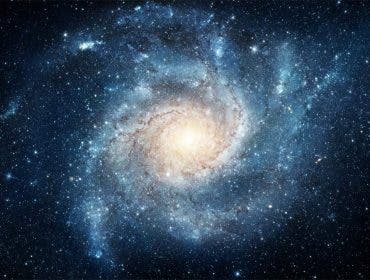Here’s the easiest way to get started capturing the night sky using your DSLR and some basic astrophotography equipment.

Wide Field Astro-Imaging is the easiest way to get started in capturing portions of the night sky, and if you’re traveling, the gear is lighter than you might think. You can image wide star fields in our galaxy the Milky Way, Comets, Constellations, Planetary alignments, beautiful aurora’s, combined Luna nature landscapes, polar star trails, and meteor showers. Great results can be achieved just with a tripod mounted camera and short exposures. Cameras that are mounted piggyback on telescopes or tracking platforms can capture images that rival images produced by professional observatories. Vast arrays of equatorial mounted DSLRs are being used for real research, and DSLR astrophotographers are discovering new variable stars, novas, supernovas, and exoplanets every day.

Whether you are imaging for science or just capturing the beauty of the heavens, it is awesome to realize these light photons could have been traveling the universe for tens, hundreds, thousands and even millions of years, and your camera’s tiny sensor has just recorded them. When imaging the universe we are recording the past, in many cases way before Human existence on Earth.
With the introduction of lower-cost digital SLR cameras and their high QE (Quantum Efficiency) CMOS and CCD sensors, astro-imaging can now be done by anyone who loves the night sky. DSLRs do not suffer from the kinds of failures that plagued film, such as reciprocity and fogging. Reciprocity failure is a decrease in light sensitivity with increased length of exposure. Film also in bright locations like cities could only be exposed for a short time before it would fog over.
Digital SLRs do suffer from a problem called noise. Noise, simply put, is caused by the heating of the electronic circuits in the camera. This problem can properly be removed (subtracted) from the image with software. Location can also be factor when imaging faint objects like the Milky Way, nebulas and galaxies, so dark skies are a must. To find a dark sky location near you, ask someone who belongs to a local astronomy club or go to this website Dark Sky Finder. Brighter objects like planetary alignments, lunar and solar eclipse, meteor showers and satellites can be imaged in a semi or moderate light polluted areas.
What You Need To Get Started
1) First, you need a DSLR, which can be any of the Canon Rebel series from the XT, XTi, XSI T1i, T2i, T3i, T4i, T5i, from the 20D/DA thru the 60D/DA, and the EOS 5D Mark III thru the 7D series. Most of the Nikon series DLSRs from the D70, D90, D200, D300, D600, D5200, D7000 and the D7100. Other DSLRs that will work are from Olympus, Pentax, Panasonic, Fuji and Sony. All DLSR have sensors that are very sensitive to infra-red light. The manufacturers install IR cut filters to reduce the amount of IR energy from reaching the imaging chip and to maintain good color balance. This hinders the camera’s sensitivity in recording reds including hydrogen-alpha (Hα) which is found in nebulas and star forming regions in galaxies.

These cameras do work fine for most astronomical imaging but will lack detail in the red channel. Canon modified their EOS 60D camera to one that is optimized for an increased spectral sensitivity for astro-imagers by replacing their IR cut off filter to one that passes three times more hydrogen-alpha (Hα) light. This camera is named the 60Da. Most in-stock Canon, Nikon, and some Sony’s can be modified by removing their stock IR filter and replacing it with one that is clear for the full spectrum of the sensor or one that is transparent to Hydrogen-alpha(Hα). These modifications usually cost a few hundred dollars plus parts, Hap Griffin and Gary Honis have companies that provide these services.
2) One of the most important equipment for astro-imaging is a sturdy photography tripod, with a video or ball head to mount your camera and or tracking system too. Manfrott 0 190XB1280RC , Vanguard ALTA+ 234AP, and Davis & Sanford Magnum XG, available at the Adorama Tripod department, are all excellent choices.

3) A motor drive is very useful for offsetting the Earth’s rotation when tracking objects with long exposure times. Examples are from AstroTrac, Ioptron, and Vixen also one can use a telescope mount that is equipped with an RA drive. Note that these devices are not necessary if you only plan on taking images under 15 seconds or shooting star trails.
4) To minimize vibrations a cable remote or timer release is recommended for hands free shutter operations. The Phottix TR-90 and Canon RS-60 E3 Remote Switch are among many cable remotes available.
5) Software and Camera controls, Images Plus camera control software, Backyard EOS camera control software Camera Control Pro 2, Canon Digital Solution software (included with the camera), Nikon and MaxIm DL are software programs that control your DSLR from your computer. Images Plus and MaxIm DL also include image processing tools for a complete package from image acquisition to the final processed image. Adobe Photoshop, Photoshop Elements, and Lightroom are programs also used in the final processing of your image. There are 2 excellent books on DSLR imaging I do recommend you read, they were written by friends of mine. The first one is from Robert Reeves and is called Introduction to Digital Astrophotography and the second is from Jerry Lodriguss Book on CD: “A Beginner’s Guide to DSLR Astrophotography On CD”.
Stay tuned tomorrow for part 2 in this series: Wide Field Astro-Imaging, Part 2: Getting Started, and share your best astro-images in the comments!





